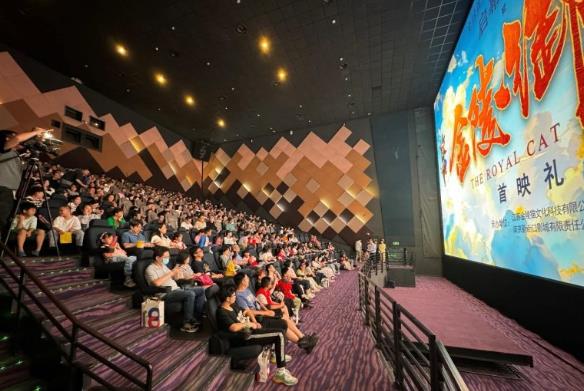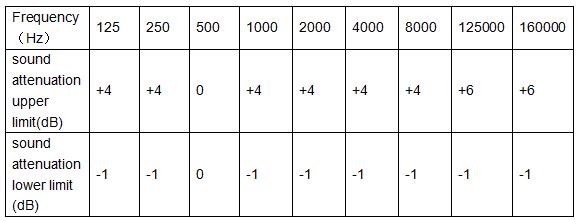With the continuous improvement of LED display technology, the advantages of LED cinema screen in display effects and energy saving have also been widely recognized by the public, and its application cases are gradually increasing around the world. However, traditional LED cinema screens use a fully enclosed cabinet with almost no sound transparency, which makes it impossible to install speakers behind the screen, resulting in a large deviation of sound and image, and has certain limitations in the sound reproduction effect. The emergence of acoustic transparent LED screens has undoubtedly solved the problems of sound and image deviation and insufficient sound reproduction effects of traditional LED cinema screens, and is expected to lead a new trend in digital cinemas in the future.

The world’s first acoustic transparent LED screen
Acoustically transparent LED screen, also known as acoustic transparent LED cinema screen, is an LED screen designed with a special pore structure, which allows sound to pass through the pores, thereby achieving a high degree of position consistency between the sound and the corresponding characters in a movie, and therefor to improve the overall audio experience while watching a movie.
Acoustic transparent LED screen is a perfect combination of traditional LED cinema screen and acoustic transparent technology, combining the visual experience of traditional LED cinema screen and the best sound reproduction effect.

Kinglight P3 Color Gamut Series LEDs for cinema screens
There are two ways to make acoustic transparent LED screens. The first is the one utilizing pore structure for sound transmission as we mentioned in previous section, and the second is the one named as acoustic LED screen, which speakers are integrated into the LED panels.
At present, there are cinemas already using acoustic transparent LED screens, and it is said acoustic transparent LED screen can be an equal replacement of traditional LED cinema screens with the same specifications.
The acoustic LED screen technology is based on the principle that the LED panel is an electrical structural component, and the speaker can be integrated into the LED panel, so as to realize the self-sounding characteristics of the LED screen, rather than transmitting the sound of speakers through the openings on the screen. Therefore, strictly speaking, this technology is not a conventional acoustic transparent LED screen. In addition, the technology is still in the research and development stage, and there are no relevant practical application of acoustic LED screen.
To achieve the same sound reproduction effect as a traditional movie projector on an acoustic transparent LED screen, the position of its main speaker should be consistent with that of a traditional film projection system, that is, placed right behind the acoustic transparent LED screen. Meanwhile, it also requires high on the sound transmission performance of the acoustic transparent LED screen.
So, how do we evaluate the sound-transmitting performance of an acoustic transparent LED screen?
We can utilize the value of sound attenuation to define the sound transmitting performance of an acoustic transparent LED screen, that is, the difference in sound pressure level (SPL) between the sound wave not passing through the sound-transmitting structure and the sound wave passing through the sound-transmitting structure of the screen.
Since the sound-transmitting pore structure of the acoustic transparent LED screen is extremely complex, the sound reproduction effects of each frequency band vary greatly.
The standard JB/T 7809-2005 “Characteristic Parameters and Measurement Methods of Projection Screens” stipulates that the difference between the sound attenuation of an acoustic transparent LED screen at 8000Hz and 12500Hz and the sound attenuation at 500Hz should be no more than 4dB and 6dB respectively. The sound attenuation characteristics of an acoustic transparent LED screen at each frequency relative to 500Hz should at least meet the relevant provisions of the following table.

sound attenuation of acoustic transparent LED screen
In addition, because the sound-transmitting holes in the LED screen are hard perforated structures, the impact of harmonic distortion on the sound reproduction effect should be considered, and the total harmonic distortion rate when the sound waves pass through the sound-transmitting openings should be no more than 1%. From the perspective of the overall sound-transmitting effect, the effective opening rate (that is, the area of the openings for sound transmitting divided by the area of the screen) should be no less than 9%.
Continue to read the second section:
Acoustic Transparent LED Screen- The New Trend of Digital Cinemas (II) >>>